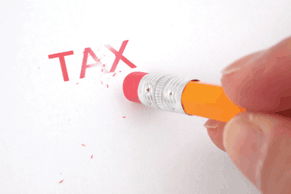Pandemic sales boom: will it mean scheme eligibility ends?
A business' turnover has grown during the coronavirus crisis. If they use any of the three main VAT schemes, they might have to leave if they exceed certain limits. What are these thresholds and is there a way to avoid or delay a departure date?

Flat rate scheme (FRS)
A business can join the FRS if it expects taxable sales in the next twelve months will be less than £150,000 excluding VAT. This figure ignores sales that are either exempt or outside the scope of VAT.
However, businesses don’t need to leave the scheme and revert to normal VAT accounting until their gross turnover including VAT has exceeded £230,000 on the anniversary date of when they first joined. If all sales are standard-rated, this equates to £191,667 excluding VAT. The business must then leave at the end of the return period that includes this date.
There is potentially an extra three months’ grace here. If the business joined the scheme on, say, 1 January 2015, they will annually check turnover for the twelve months to this date, rather than 31 December, and then leave at the end of the March period, rather than the previous December.
Other schemes
With the annual accounting scheme (AAS) and cash accounting scheme (CAS), businesses can join if they expect taxable sales in the next twelve months will be less than £1.35m excluding VAT.
The advantage of the AAS is submitting one VAT return each year instead of four, making regular payments on account during the year. With the CAS, businesses only account for output tax on a return when customers have paid, rather than the earlier invoice date that usually applies. However, with the CAS, the business cannot claim input tax until they pay suppliers.
Leaving date
With the AAS and the CAS, a business must leave if total annual taxable sales excluding VAT have exceeded £1.6m:
- with the CAS, the business needs to check annual sales at the end of each quarter, i.e. for this period and the three previous quarters. They will then leave at the end of the current quarter and revert to normal VAT accounting
- for the AAS, the twelve-month test will be identified when the business completes the annual return. If the threshold has been breached, HMRC will remove the business from the scheme and they must then submit quarterly returns moving forward.
Only taxable sales should be included with the CAS and AAS limits, i.e. excluding exempt and outside the scope income. The FRS calculation includes all sources of income and VAT.
Temporary breach
If sales have exceeded the exit threshold on a temporary basis, there is potentially good news with the CAS and FRS.
CAS. Although the leaving date is compulsory based on the £1.6m turnover threshold, the business can rejoin at any time if they expect taxable sales in the next twelve months will be less than £1.35m. There is no minimum time period before they can rejoin.
FRS. The business will need to write to HMRC, explaining why they expect total turnover in the next twelve months will be less than £191,500 including VAT again. If HMRC accepts the explanation, the business won’t need to leave.
Related News
-
Planning ahead for pension salary sacrifice changes
From 6 April 2029, both employers and employees will be required to pay Class 1 NI on pension contributions in excess of £2,000 made through a salary sacrifice arrangement. What can you do about it?
-
Can you claim input tax on costs linked to electric cars?
Your business intends to go green and buy new electric cars. Can you claim input tax on the purchase of the vehicles and their subsequent fuel costs? Additionally, what recent change has been announced by HMRC?
-
Dodging the 2027 IHT and pension changes
In a little over a year the inheritance tax (IHT) exemption for unused pension savings comes to an end. If you’re married or in a civil partnership, one simple step might save your estate thousands in IHT. What is it?